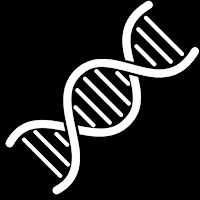In nature, organs aren't built by any tissue engineering. In the embryo, organs develop spontaneously through a process called self-organization. During development, the cellular building blocks interact with each other, moving around and changing shape as an organ's structure emerges and grows.
But Scientists have developed sesame seed sized heart models in laboratory using human pluripotent stem cells. They called them cardioids, that spontaneously self-organize to develop a hollow chamber without the need of experimental scaffolds. This advance, which allows for the creation of some of the most realistic heart organoids.
The self-organization of organs is much more dynamic, and a lot is going on that we do not understand. We think that this 'hidden magic' of development, the stuff we do not yet know about, is the reason why currently diseases are not modeled very well.
Previously, scientists have built 3D cardiac organoids via tissue engineering, an approach that generally involves assembling cells and scaffolds like building a house out of brick and mortar. But these engineered organoids do not have the same physiological responses to damages as human hearts and thus often fail to serve as good disease models. Self-organization is how nature makes snowflake crystals or birds behave in a flock. This is difficult to engineer because there seems to be no plan, but still something very ordered and robust comes out.
How these seed-sized heart models developed in labs?
Researchers team wanted to mimic development by self-organization in a dish. To do this, they followed several steps.
- Activating Signalling pathways:
They coaxed stem cells to self-organize by activating all six known signaling pathways involved in embryonic heart development in a specific order. As the cells differentiated, they started to form separate layers, similar to the structure of the heart wall.
- Self organized 3D structures:
After one week of development, these organoids self-organized into a 3D structure that had an enclosed cavity, a similar spontaneous growth trajectory as human hearts. In addition, the team found the cardioids' wall-like tissue contracted rhythmically to squeeze liquid around the inside the cavity.
"It's not that we are using something different than other researchers, but we are just using all of the signals known," Mendjan says. He adds that not all pathways are needed to direct stem cells to become heart cells. "So they thought, 'Okay, they're not really necessary in vitro.' But it turns out all these pathways are necessary. They are important to make the cells self-organize into an organ."
Testing response against tissue damage:
The team also tested how the cardioids respond to tissue damages. They used a cold steel rod to freeze parts of the mini-hearts and killed many cells at the site. Cell death is commonly observed after injuries such as a heart attack. Immediately, the team saw cardiac fibroblasts -- a type of cell responsible for wound healing -- start to migrate toward the injury sites and produce proteins to repair the damage.
"We want to come up with human heart models that develop more naturally and are therefore predictive of disease," Mendjan says. "This way, companies will be more open to bringing more drugs into the clinical trials because they are much more certain of the outcome of the trial."
The team has plans to grow cardiac organoids with multiple chambers like what's seen in a real human heart. Many congenital heart diseases happen when other chambers start to form, so the multi-chamber model would help doctors better understand how defects develop in fetuses.
References:
- Information provided by Cell Press.
- Pablo Hofbauer, Stefan M. Jahnel, Nora Papai, Magdalena Giesshammer, Alison Deyett, Clara Schmidt, Mirjam Penc, Katherina Tavernini, Nastasja Grdseloff, Christy Meledeth, Lavinia Ceci Ginistrelli, Claudia Ctortecka, Šejla Šalic, Maria Novatchkova, Sasha Mendjan. Cardioids reveal self-organizing principles of human cardiogenesis. Cell, 2021; DOI: 10.1016/j.cell.2021.04.034




